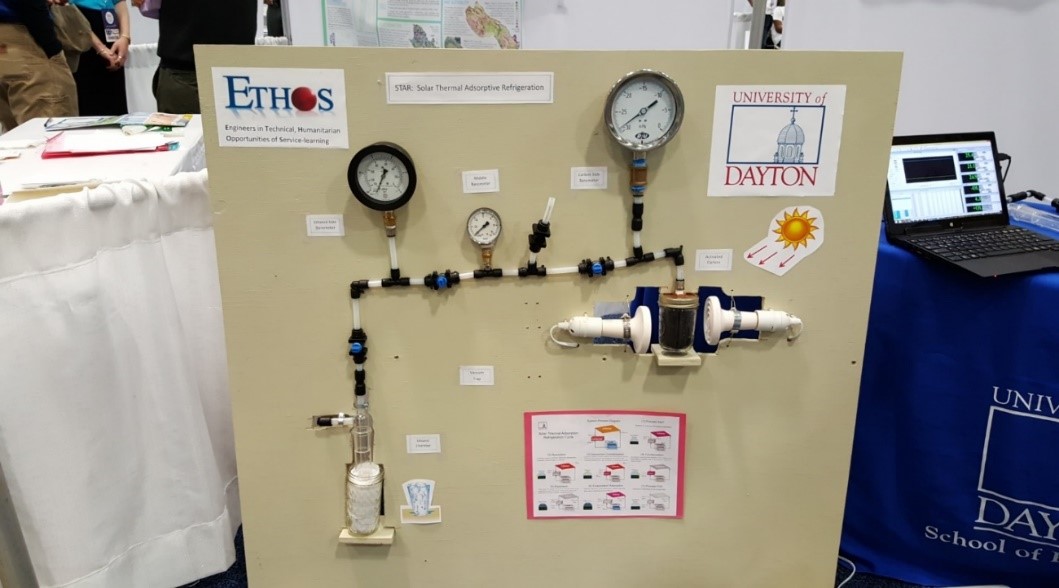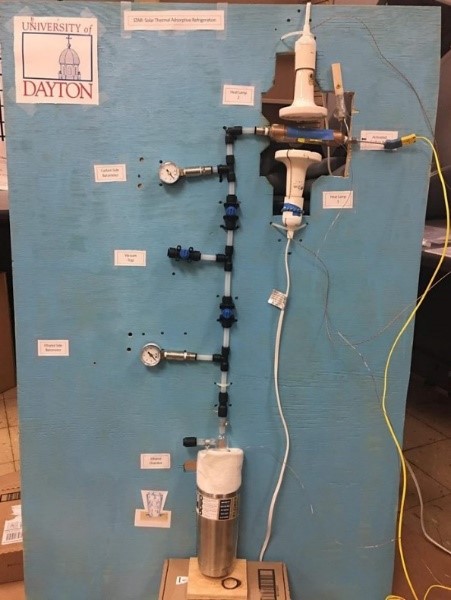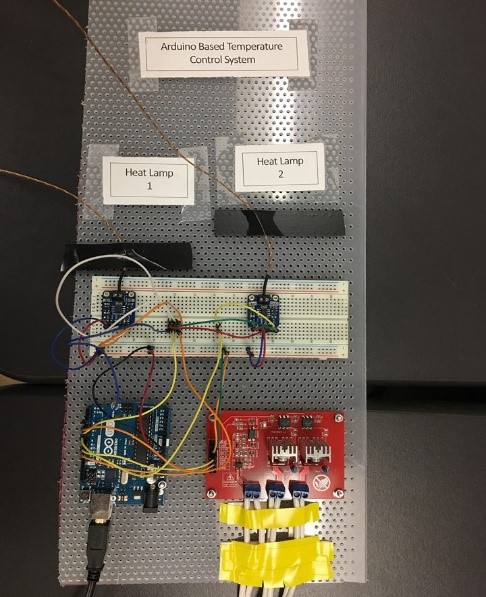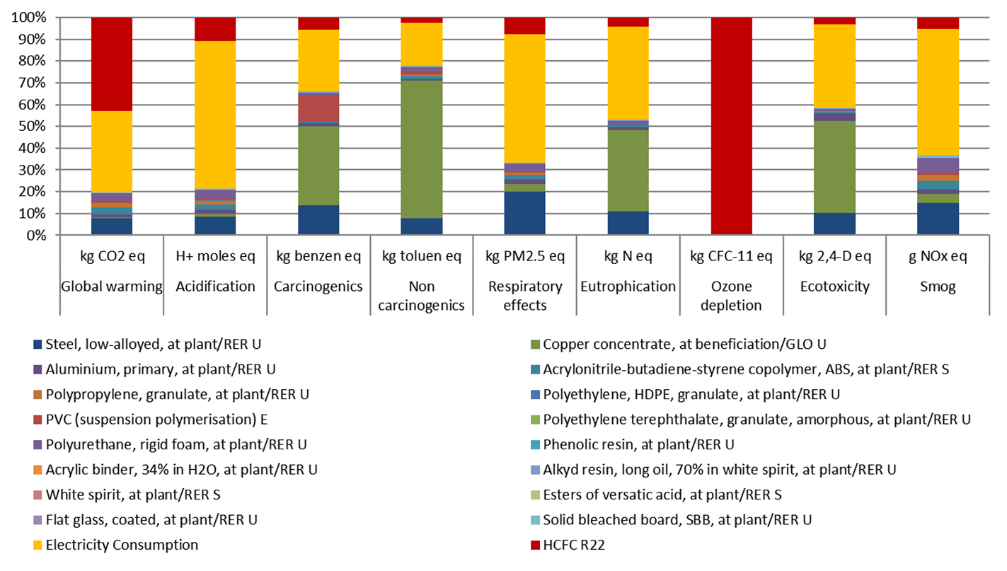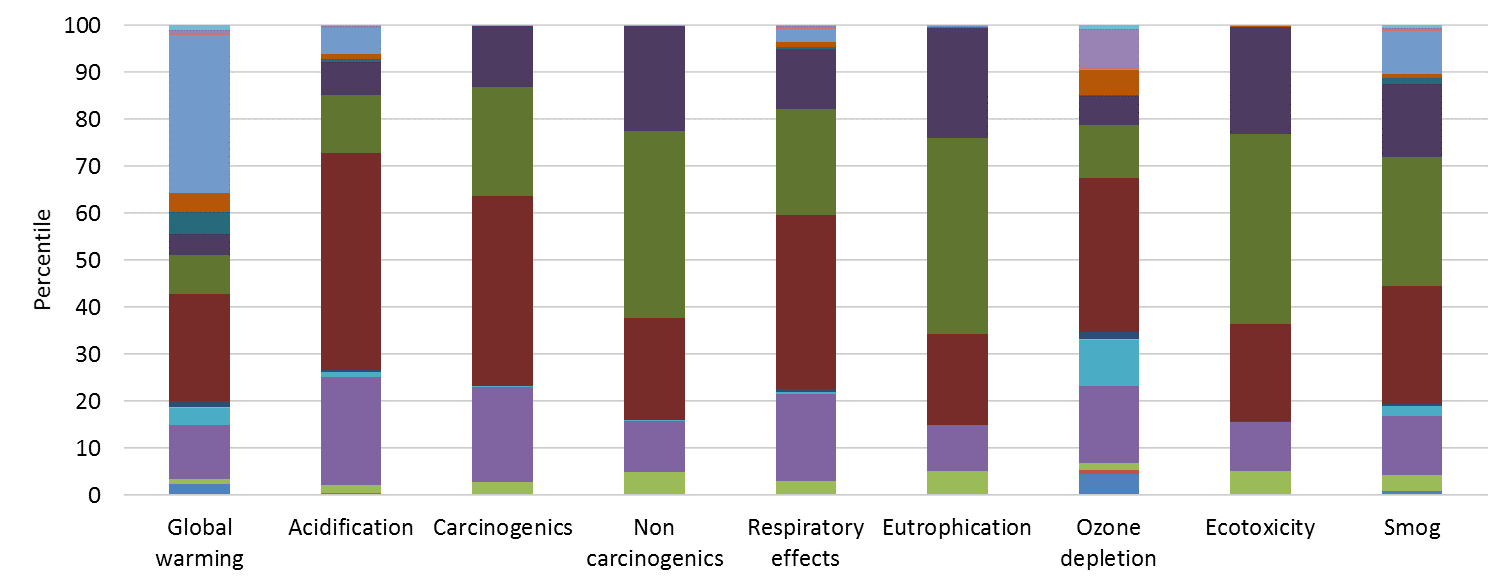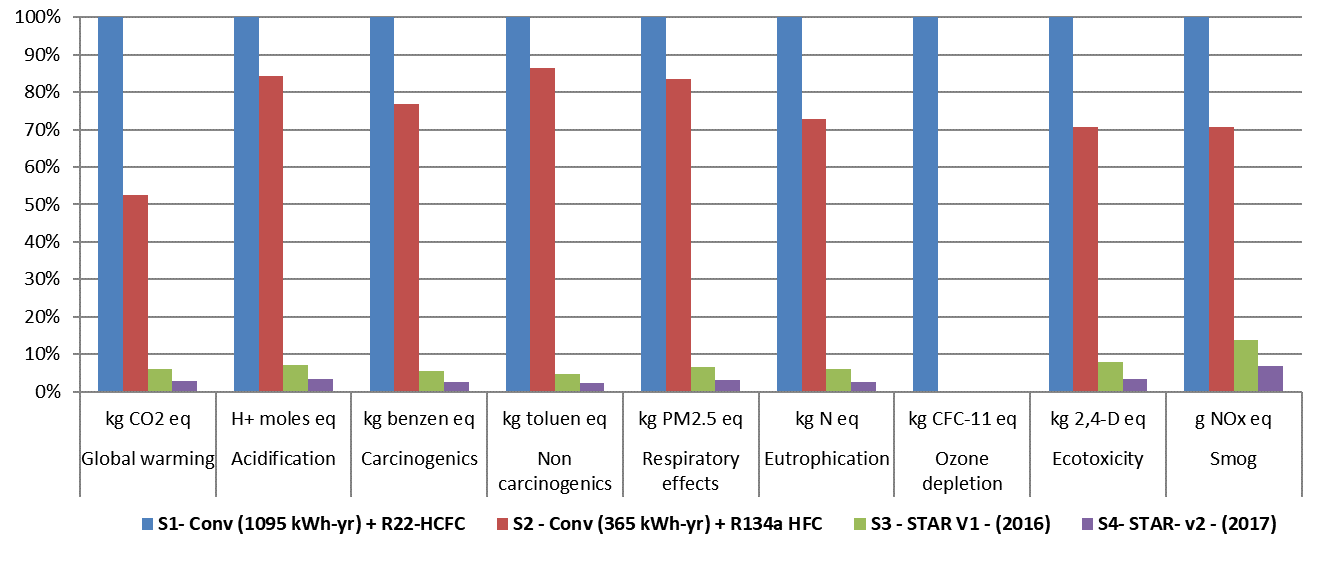Grantee Research Project Results
Final Report: STAR: Solar Thermal Absorptive Refrigeration
EPA Grant Number: SV838800Title: STAR: Solar Thermal Absorptive Refrigeration
Investigators: Choi, Jun-Ki , Ciric, Amy , Romo, Joshua , Karki, Bipin , Slenska, Tara , Worsham, Matthew , Willard, Katie , Quinn, Natalie
Institution: University of Dayton
EPA Project Officer: Callan, Richard
Phase: II
Project Period: February 1, 2017 through January 31, 2019 (Extended to January 31, 2020)
Project Amount: $74,975
RFA: P3 Awards: A National Student Design Competition for Sustainability Focusing on People, Prosperity and the Planet - Phase 2 (2016) Recipients Lists
Research Category: P3 Awards , Sustainable and Healthy Communities , P3 Challenge Area - Air Quality
Objective:
Timeliness of routine vaccinations requires an appropriate supply of vaccines, but many vaccines are temperature sensitive. Some, such as the polio vaccine, are heat sensitive and must be kept cool, while others, including the DTaP, Hepatitis A and Hepatitis B vaccines, are freeze sensitive and must be stored above 0⁰C. Consequently, timely delivery of routine immunizations requires a robust cold chain that can safely store vaccines at temperatures between 2⁰C and 8⁰C. This is difficult in remote, low income areas where the electric grid is unreliable. Although bottled gas and solar powered refrigerators can be used in these settings, they face challenges: bottled gas refrigerators are dependent upon fuel deliveries, and conventional solar powered refrigerators are powered by photovoltaic cells, which are expensive and often co-opted for other uses.
Summary/Accomplishments (Outputs/Outcomes):
We have developed an adsorptive refrigerator that does not require electricity, uses ethanol and activated carbon as the refrigerant pair to maintain temperatures between 2⁰C and 8⁰C inside the refrigerator compartment. This alternative technology, Solar Thermal Adsorptive Refrigeration (STAR), uses solar energy and the tendency of ethanol to adsorb into the surface of activated carbon to drive a refrigeration process. A key philosophy in the development of this project has been a focus on “appropriate technology” design principles, using locally available materials and expertise to implement sustainable, culturally acceptable solutions to engineering problems. The primary goal of this project was to build prototypes that would demonstrate the potential for adsorptive refrigeration, using ethanol and activated carbon as the adsorption pair. This prototype was also used to complete a preliminary lifecycle analysis to determine the environmental impact of this innovative technology.
Outputs:
We have developed two scaled up prototypes (horizontal and vertical systems). For both system, governing principles are same. The refrigerator consists of a vacuum chamber, a freezer compartment, and an adsorption bed of activated carbon that operates on a two phase cycle as shown in the following figure 1.
Figure 1: Horixontally oriented STAR bench-scale prototype
In the cooling phase, liquid ethanol in the vacuum chamber evaporates, drawing heat from the freezer compartment and refrigerating its contents. The ethanol vapors flow to the adsorption bed and adsorb onto the surface of the activated carbon. In the regeneration phase, the adsorption bed is heated in a solar oven, causing the ethanol to desorb. The ethanol vapors flow, cooling and condensing as they move through the line, closing the cycle. Unlike conventional solar powered refrigerators, this refrigerator does not require a photovoltaic cell to operate. One of the significant research outcomes in this period of research is that we have achieved the refrigeration temperature 2⁰C which is more than enough temperature for storing vaccine. Other major research progresses and achievements to date are: 1) Identifying the effects of temperature, vacuum pressure and desorption time during the desorption process, 2) Determining lower and upper limit temperature for desorption of ethanol from activated carbon during desorption, 3) Detecting possible decomposition of ethanol during desorption process at high desorption temperature, 4) Analyzing life cycle environmental impacts of the STAR system and comparing the impacts with the conventional refrigerators.
Design Apparatus for Temperature Profiling of Adsorbent bed: Our experiments showed that the activated carbon inside the adsorbent bed (glass jar) of the horizontal STAR system was not heated enough for proper desorption. Therefore, a test rig was designed for temperature profiling which helped to understand the rate of heat transfer from outer layer to inner layer of the adsorbent bed. Instead of the glass jar used in the horizontal system, copper tube is designed in the vertical system to improve the heat transfer rate of the adsorbent bed. The copper tube has two caps at either end, with one a ¼ inch threaded connection. The copper tube was assembled together by with a soldering joint. Later, a temperature probe was integrated into the copper tube to record the temperature of the activated carbon inside the copper tube. These experiments were carried for a short time duration of 10 to 15 minute. The two heat lamps were turned on and temperature of the outer layer, the inner layer, and activated carbon was recorded using Omega HH 147U data logger thermometer into the computer to analyze heat transfer rate.
Design Bench Scale Desorption Apparatus: During desorption, the adsorbed ethanol on the activated carbon is regenerated by the application of thermal heat. Desorption of ethanol from adsorbed activated carbon makes the process cyclic. Desorption temperature and time duration of desorption are very crucial to desorb ethanol to make adsorption-desorption cycle. A bench-scale desorption test rig was designed to perform experiments to determine the lower and upper bound desorption temperatures of ethanol from activated carbon, as well as time duration for desorption. The glass chamber and copper adsorbent bed were filled with ethanol and a varying amount of activated carbon, respectively. The mass of ethanol was constant for all experiments. Dehydrated and undenatured Spectrum 200 proof (99.5% pure) ethanol was used for experimental analysis. Chemi glass 29/42 was used as evaporator and nylon tubing of diameter 10 mm was used as the piping connection. A Pittsburgh 2.5 cubic feet per minute (cfm) vacuum pump was used to pull the vacuum on the system through the valve between ethanol chamber and pressure gauge. After pulling a vacuum, the adsorption cycle was carried out until all the ethanol has adsorbed to activated carbon. Heat lamps were turned on during desorption process; however, the uncontrolled temperature on the bench scale desorption and initial experiments on vertical system made it difficult to understand effects of particular temperature on desorption process.
Design Arduino-based Temperature Control System: In order to solve the issue of the uncontrolled temperature on the bench scale desorption process, an Arduino based temperature control system was built to control the temperature of the activated carbon during desorption. Arduino based temperature control system was assembled using an Arduino UNO board, thermocouple Type – K, thermocouple amplifier, A.C light dimmer module controller board, breadboard, and wires with sockets. The code was written in C/C++ format using open source Arduino software. The Arduino temperature control system regulates the temperature of the adsorption bed by adjusting the power to the heat lamp. The real-time temperature is displayed on the serial monitor on Arduino screen.
Construction of Vertical STAR system: The bench-scale horizontal STAR system can generate evaporative temperatures between 2⁰C and 8⁰C. The system can achieve targeted refrigeration temperatures during the adsorption cycle, and the ethanol can be desorbed from the activated carbon during desorption. However, the horizontal geometry inhibits the return of liquid ethanol to the evaporation chamber. No return or less return of ethanol limits the number of cycles that can be performed. Therefore, a vertically oriented bench scale system was built to address the limitation of the horizontal prototype as shown in the figure 2. The glass jar from horizontal system was replaced with copper tube, and power to the heat lamps was controlled by the Arduino system. The vertical system setup consists of following parts: glass tube, yeti cup, fabric, nylon tube, two vacuum pressure gauges, heat lamp, vacuum pump, vacuum trap, three ball type valves, elbows, straight and T-connectors, temperature probe and plywood board to support the system. A Chem glass tube was used as the evaporator, which contains measured liquid ethanol under vacuum. DOW Corning high vacuum grease was used to make the connection vacuum proof. The cap has two extruded tube-like openings; both openings were vacuum greased, and nylon tubes with 12 mm diameter were inserted into the opening and tightened with 12 mm ABA Sweden hose clamps. One of the openings was closed by 12mm nylon cap and another opening was connected to the tube using 12mm to 10mm connector.
Figure 2: Experimental setup for a) double activation of activated carbon (left); b) Arduino based temperature control system (right)
The horizontal system used the jelly jar as an adsorbent bed. Experiments showed that the activated carbon inside the adsorbent bed (jelly jar) was not heated enough for proper desorption. A small test rig was designed for temperature profiling of jelly jar which helped to understand the rate of heat transfer from outer layer to inner layer and then to activated carbon. In previous work on the horizontal system, temperature from the outer layer of the jelly jar was recorded which did not show actual temperature of activated carbon during the adsorption-desorption process. A temperature probe was integrated into the adsorbent bed to record the actual temperature of activated carbon. The heat lamp was used as a source of solar thermal heat.
Other developments: Experimental setup was designed for optimizing the effective adsorption and desorption conditions. The process for the preparation of activated carbon for experimentation and collection of desorbed ethanol was altered from the base condition. The experimental procedure consists of an additional process for double activation of activated carbon. We also changed the other experimental setups. For example, with help of the vacuum trap and vacuum pump, the vacuum is pulled out until the pressure gauge reading shows -28 inHg towards the adsorbent bed. The valve toward vacuum trap is closed after pulling a vacuum. The adsorbent bed is heated at 300oC for 30 minutes, and then vacuum is pulled at end on the adsorption side of the apparatus. The adsorption process is carried for different time duration. During desorption, all the valves connecting the evaporator to the adsorbent bed are opened. Ice is used on the yeti cup to condense the ethanol vapor which is desorbed from activated carbon from the adsorbent bed. The adsorption cycle was performed till all ethanol was adsorbed onto activated carbon which happened usually in a time interval of 18-20 hours. Desorption is carried for a different time interval. The pressure was recorded at the beginning, middle and end of each experiment cycle. After the final cycle, the volume of ethanol left in the ethanol chamber is measured with a graduated cylinder, and the mass of activated carbon from adsorbent bed is recorded.
Comparative Environmental Life Cycle Analysis: We have performed an environmental life cycle assessment (LCA) of two versions of STAR systems and compared the results with two conventional refrigeration systems. LCA allows to compares various life cycle environmental impacts from the systematic perspectives by considering all the material/energy inputs and various types of effluent (air, water, ground) from the raw material extraction, manufacturing, transportation, use, and the end-of life of the product systems. Results showed that significant reduction of the life cycle environmental impacts can be achieved by STAR compared to the conventional refrigerators as shown in the following figures. Figure 3 shows the percentile contribution of each component (material, refrigerant, annual electricity consumption) of the scenario 1 for various environmental impact categories. Yellow bar and red bar indicate the percentile contribution of the annual electricity consumption and the use of HCFC (R22) throughout the lifetime of the conventional refrigerator respectively. In terms of life cycle impacts, 1095 kWh of annual electricity consumption contributes about 33% of global warming potential (GWP), about 70% of acidification (AC), about 60% of the respiratory effect, about 60 % of the smog, more than 50% of the eutrophication and ecotoxicity impacts of a conventional refrigerator (SC1). If the analysis extrapolates to 10~15 years of use of the refrigerator, the impacts by the electricity consumption will increase 10~15 times higher. Refrigerant HCFC contributes about 42% of GWP and 100% of the Ozone Depletion impact.
Figure 3: Life cycle environmental impact of scenario 1
Figure 4 shows the percentile breakdown of various lifecycle environmental impacts generated from the components of the prototype. It provides important insights into the relative level of contribution of components and trade-off decisions among different environmental impacts. For example, about 38%, 35 %, 14%, 6%, and 4% of the life cycle global warming potential (GWP) impacts (i.e. far left bar of Figure 8) are accrued from the production stages of nylon, brass, copper, glass, and aluminum, respectively. This information will allow us to enhance the specific life cycle environmental impact by applying various design for environment (DfE) strategies such as using renewable materials or alternative materials for the environmental hotspots.
Figure 4. Life cycle environmental impacts of the horizontal system
Successful replacement of a conventional fridge with STAR can annually reduce about 90 % of global warming potential (GWP), acidification, carcinogenics, eutrophication, respiratory effects, smog while completely eliminated the ozone depletion impacts. CFCs and HCFCs are being phased out since they attack the ozone layer in the stratosphere. While their replacements HFCs such as R-134a, do not attack the ozone layer, they have high global warming potentials (GWPs). Considering typical lifetime of a conventional fridge of 15 years, the reduction of aforementioned environmental impacts of the STAR can be scaled significantly.
Figure 5
Conclusions:
Modern refrigeration technologies are large consumers of electricity: refrigeration uses approximately 9% of the world’s electricity production, and this electricity consumption accounts for nearly 1 billion tons of CO2-equivalent greenhouse gas emissions. Refrigeration is an essential part of modern life.
We have built small bench-scale prototypes that consists of a vacuum chamber, a freezer compartment, and an adsorption bed of activated carbon, connected by tubing and valves that allow the vacuum chamber and adsorption bed to be isolated from one another. The prototype operates in two modes. In the cooling mode, liquid ethanol in the vacuum chamber evaporates, and the ethanol vapors flow to the adsorption bed, where they adsorb onto the surface of the activated carbon. The heat to generate the ethanol vapors is drawn from the freezer compartment through the walls of the vacuum tube, leading to evaporative cooling. The cooling mode can continue until the activated carbon is saturated with ethanol. In the regeneration mode, valves connecting the adsorption bed and the vacuum chamber are closed and the adsorption bed is heated, causing the ethanol to desorb and the partial pressure of ethanol vapor in the adsorption bed to increase. When the valve connecting the adsorption bed and the vacuum chamber is opened, the ethanol vapors flow, cooling as they move through the line, and condense in the vacuum chamber, setting the stage for a second cooling stage. This prototype has been repeatedly used to obtain temperatures between 2⁰C and 8⁰C on the external wall of the vacuum tube, and the full cycle of cooling and regeneration has been run.
This research has the potential to make a significant economic, environmental and social impact. The worldwide market for refrigeration equipment is approximately 100 billion dollars; over 80 million domestic refrigerators alone are produced each year. This market is dominated by the conventional vapor compression cycles that use ammonia and hydrofluorocarbons as refrigerants and rely upon electricity for operation. The electricity consumption accounts for nearly 1 billion tons of CO2-equivalent greenhouse gas emissions. However, despite its broad success, conventional refrigeration technology has overshot markets like the Bihar state in India-regions without a reliable electric grid where the residents cannot afford solar-powered electrical appliances. While the demand for refrigeration in these regions is far lower than in industrialized countries, there are a few critical applications, such as refrigerating vaccines, where the need for refrigeration is urgent and immediate. Lack of refrigeration and safe storage of vaccine is key issues in such areas.
Although our current prototypes cannot provide the same refrigeration capacity, functionality, and aesthetic quality as conventional refrigerators at this moment, our LCA models show that one successful replacement of a conventional fridge with STAR technology can achieve up to 22 tons of lifetime CO2 emission reduction. This is equivalent to the annual CO2 emission from 3 typical US households. Considering a $100 billion worldwide market for refrigeration equipment and over 80 million domestic refrigerators produced per year, even a small percentage adoption of the proposed STAR can significantly reduce environmental impacts worldwide.
Journal Articles:
No journal articles submitted with this report: View all 7 publications for this projectSupplemental Keywords:
Adsorption, refrigeration, evaporative cooling, life cycle assessmentProgress and Final Reports:
Original AbstractP3 Phase I:
Solar-Thermal Adsorption Refrigerator (STAR) | Final ReportThe perspectives, information and conclusions conveyed in research project abstracts, progress reports, final reports, journal abstracts and journal publications convey the viewpoints of the principal investigator and may not represent the views and policies of ORD and EPA. Conclusions drawn by the principal investigators have not been reviewed by the Agency.

